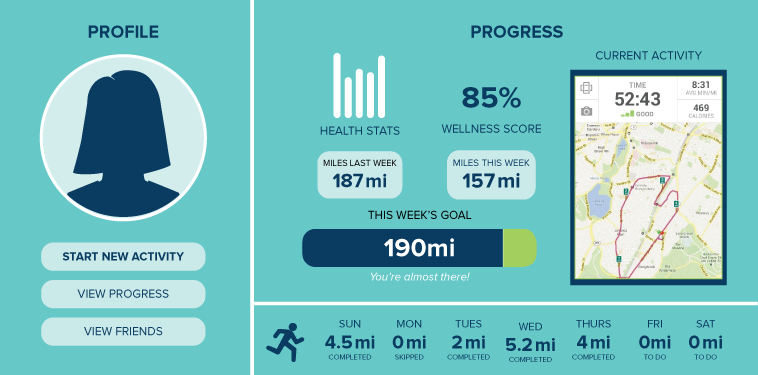From Fun to Fit: Gamification in Healthcare

Gamification, or the practice of applying game-like elements to non-game contexts or problems, is becoming increasingly prominent across a variety of industries, and healthcare is no exception. Aided by the rise of technology, gamification offers both patients and providers novel ways to promote positive health.
The Benefits of Healthcare Gamification
“Game-play focuses and controls our attention,” explains Dr. Bernadette Keefe at the Mayo Clinic. “[It] taps into our innate strengths, thrills us utterly, and compels us to greater resilience in the attainment of more powerful and effective skills.”
Gaming also works, she says, because the activity biologically produces dopamine. A brain hormone, dopamine’s major purposes are to prepare the body for motor function, reward motivation, and nurture compulsion and perseverance.
Higher levels mean that individuals are less able to experience discouragement, and therefore can function at increased levels of bravery and resilience. In this way, gaming has the potential to help individuals produce real-world results.
Industries are taking notice of this connection between gaming and life performance. In the world of business, for example, games can be used to train employees, increase motivation or create healthy competition among teams, according to Forbes. Education professionals may use games to provide students with a chance to see visualized incremental successes, take pride in their work and know how to gain access to increasingly difficult information.
When people engage in gaming by using challenges found in life, it creates a sense of optimism, gives agency and motivates, and increases the meaning they see in tasks. All these elements ultimately encourage positive behavioral change.
Gamification in Healthcare Settings
Encouraging positive behavioral change is especially relevant to the health field, where the results of those changes can have a substantial impact on both individual lives and the industry at large. Games can be used in numerous capacities, such as helping to track physical fitness, training medical professionals, encouraging patients to stay on medication regimens and assisting with physical therapy.
The specific medium of healthcare games often plays a relevant role in these functions. Games that come in the form of apps are particularly popular. They are often formatted as self-monitoring or tracking programs. For example, a phone app called “Zombies, Run!” gives players the opportunity to “save the world” during a Zombie apocalypse by reaching certain cardio goals.
Another app, called “Pact,” pays money to its members who reach their fitness goals — while fining members who don’t. And the game “Bandit’s Shark Showdown” provides a unique opportunity for physical rehabilitation. A game in which the players use a real-life robotic arm to defeat virtual sharks, it is designed to treat stroke patients early in their recovery.
Video games are also a popular format. The “Re-Mission Video Game,” for example, provides cancer patients who face long treatment sessions with the ability to better understand and manage their disease. It encourages them to participate in therapy, as well as take medication. Even entire platforms can be made for gamification in healthcare, such as the Wii Fit.
Paving the Way for Innovative Healthcare
Gamification in healthcare points to the increased use of technology in the industry to improve patient outcomes. The online Bachelor of Business Administration with a concentration in Healthcare Administration degree at Concordia University Texas can help students meet tomorrow’s challenges. The program provides a focused curriculum, enabling students who seek healthcare leadership roles to develop the skills they need for success.
